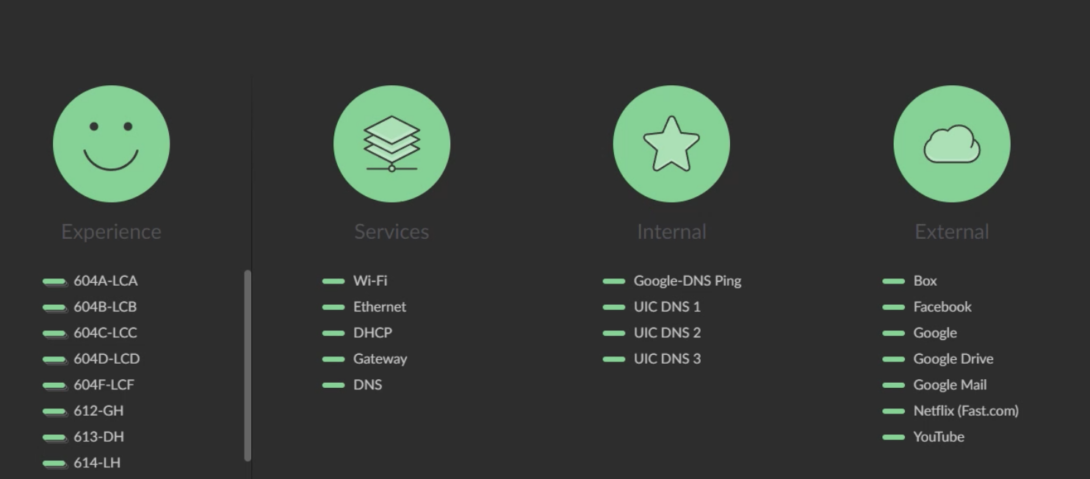UIC Installs New Network Sensors for Advanced Remote Troubleshooting

Introduction
UIC Technology Solutions is now able to monitor and address network issues faster with new UXI Sensors. Installed around campus, the sensors simulate user experience with UIC’s wired and wireless networks, continuously testing those networks and gathering performance data points and metrics that allow UIC’s network engineers to troubleshoot issues remotely.
Quote 1
Instead of spending valuable manpower and hours sending technicians and engineers out into the field, the sensors installed allow us to be proactive. They are always on and gathering data we use for troubleshooting and remediation.
| Wireless Engineer
Identifies Campus Wireless Issues Faster

A total of 40 sensors are currently operating while the team expects to install another 20 in the upcoming months as part of UIC’s plan to expand coverage, says Wireless Engineer William Lim. In the event of a power outage, about a third of the sensors are equipped with cellular and battery backup. “If network connectivity is lost but we still have power, the cellular backup kicks in,” Lim says.
The monitoring system that existed prior to the upgrade did not give the support team the option to look at user experience specifically from the client’s perspective. “Having the sensors deployed allows us to immediately start gathering data rather than dispatching a technician to the location, set up, and communicate back and forth. This allows network engineers to immediately start digging into a sensor and attain on-demand analytical data allowing us to troubleshoot problems much faster.”
Quote 2
Our new UXI Sensors are a very effective use of time and skills, especially when you’re in the middle of a potential outage.
| Wireless Engineer
Access to Online Dashboards

With the new UX Sensors, engineers can filter usage data by location such as a classroom within a specific hall and review timestamps of what issues are occurring when. In addition, with this automated reporting system, the support team can run speed tests and review signal strength remotely as opposed to having a user report it back to them, all saving valuable time.
“Previously, in a situation where it’s the middle of the night and the web shuts down during an upgrade process, we would have to go walk around campus testing the network,” Lim says. “These sensors allow us to pull up the dashboard to check on everything remotely.”